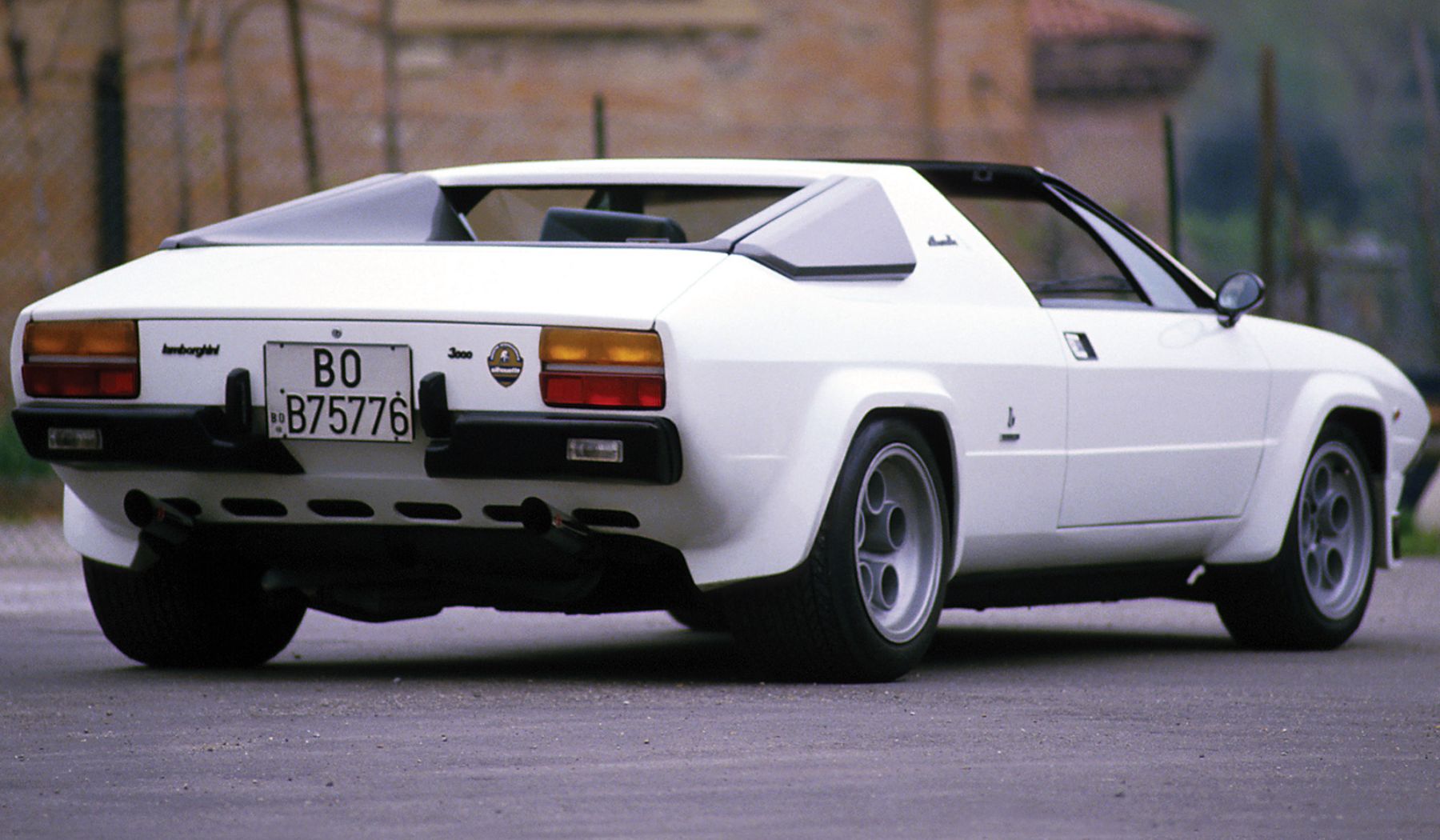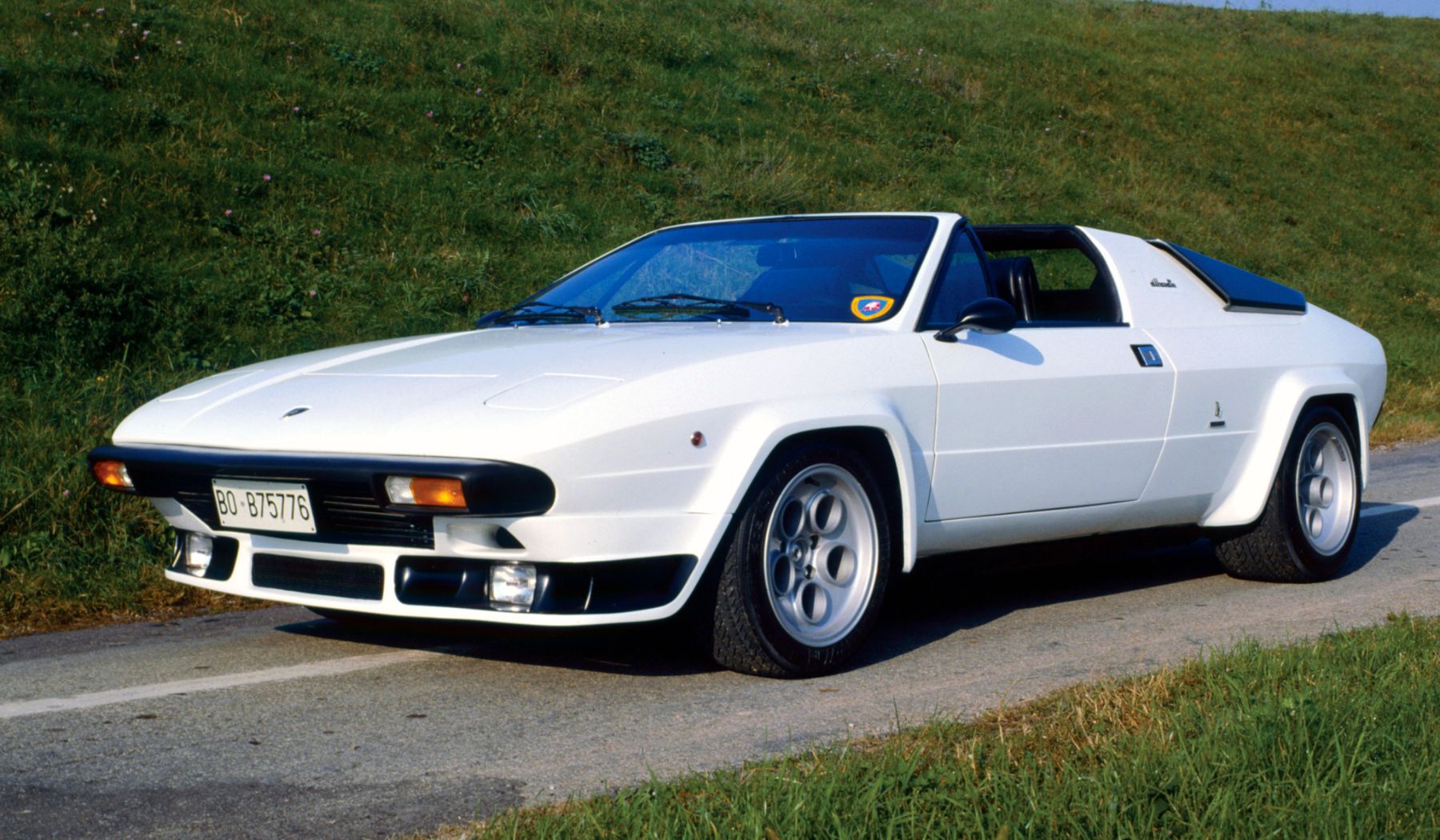The Lamborghini Silhouette, a mid engine V8 sports car, was born during a financially challenging period for the iconic Italian brand. Developed as a response to the increasing popularity of two seat, targa top sports cars like the Ferrari 308 GTS, the Silhouette was essentially a redesigned version of the Urraco, Lamborghini’s existing 2+2 GT.
Despite its evolutionary nature, the Silhouette offered a unique and stylish alternative to its rivals. The car’s distinctive wedge shaped design, penned by renowned Italian designer Marcello Gandini, was a departure from the more rounded aesthetics of the Urraco. Gandini’s clever redesign incorporated a new front end, a longer nose, and a more pronounced rear end, giving the Silhouette a more aggressive and muscular stance.

Under the skin, the Silhouette shared the Urraco’s mechanical components, including its 3.0-liter V8 engine and rear wheel drive layout. However, the Silhouette’s chassis was tuned for sportier handling, with stiffer springs and revised suspension geometry. The car also featured a lightweight targa top that could be removed to enjoy open-air driving.
Although the Silhouette was not a commercial success, it remains a fascinating and significant chapter in Lamborghini’s history. The car’s design and engineering showcased the brand’s ingenuity and determination to remain competitive in a challenging market. Today, the Silhouette is highly sought after by collectors and enthusiasts who appreciate its unique blend of style, performance, and rarity.
The Lamborghini Silhouette, a targa top supercar developed in the late 1970s, represents a unique blend of old and new. Based on the existing Urraco chassis, the Silhouette was designed by Marcello Gandini, the legendary designer behind iconic Lamborghini models like the Miura and Countach. Despite budgetary constraints, Gandini and the engineering team were able to enhance the Urraco’s driving experience through modifications to the suspension, steering, and wheels.
The Silhouette’s exterior also received a significant makeover, featuring wider wheel arches, redesigned vents, and a more aggressive chin spoiler. While the interior retained some familiar elements from the Urraco, it also introduced new features like redesigned seats and a storage compartment for the removable targa top.
Powered by the same 3.0-liter V8 engine as the Urraco, the Silhouette offered impressive performance for its time. Its mid mounted engine delivered 265 horsepower and 203 lb-ft of torque, propelling the car from 0 to 60 mph in approximately 6.5 seconds and reaching a top speed of 162 mph. Despite these impressive figures, the Silhouette’s true strength lay in its balance of performance and handling.

The car’s well tuned suspension and precise steering made it a joy to drive on both winding roads and open highways. However, despite its undeniable appeal, the Silhouette faced challenges due to Lamborghini’s financial troubles and limited marketing efforts.
As a result, the car remained relatively unknown and underrated throughout its production run. Only 54 examples of the Silhouette were ever built, making it a rare and sought after collectible today. Despite its limited production and relatively short lifespan, the Silhouette stands as a testament to Lamborghini’s design and engineering prowess.
Its unique combination of old and new elements, coupled with its impressive performance and handling, make it a truly special car. While it may have been overlooked by many during its time, the Silhouette’s legacy continues to fascinate automotive enthusiasts around the world.

